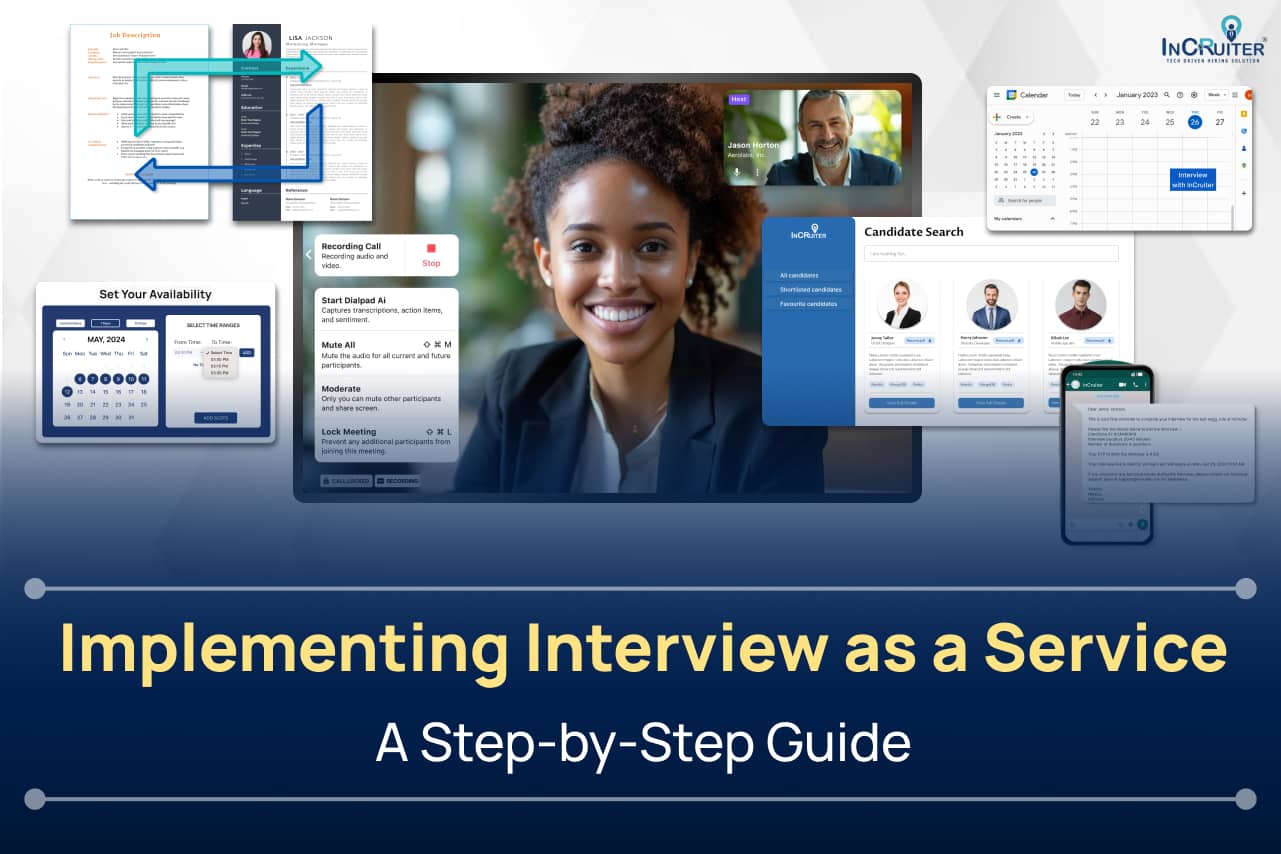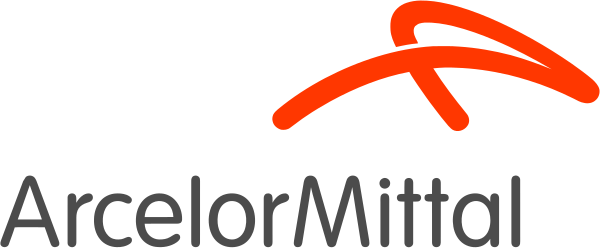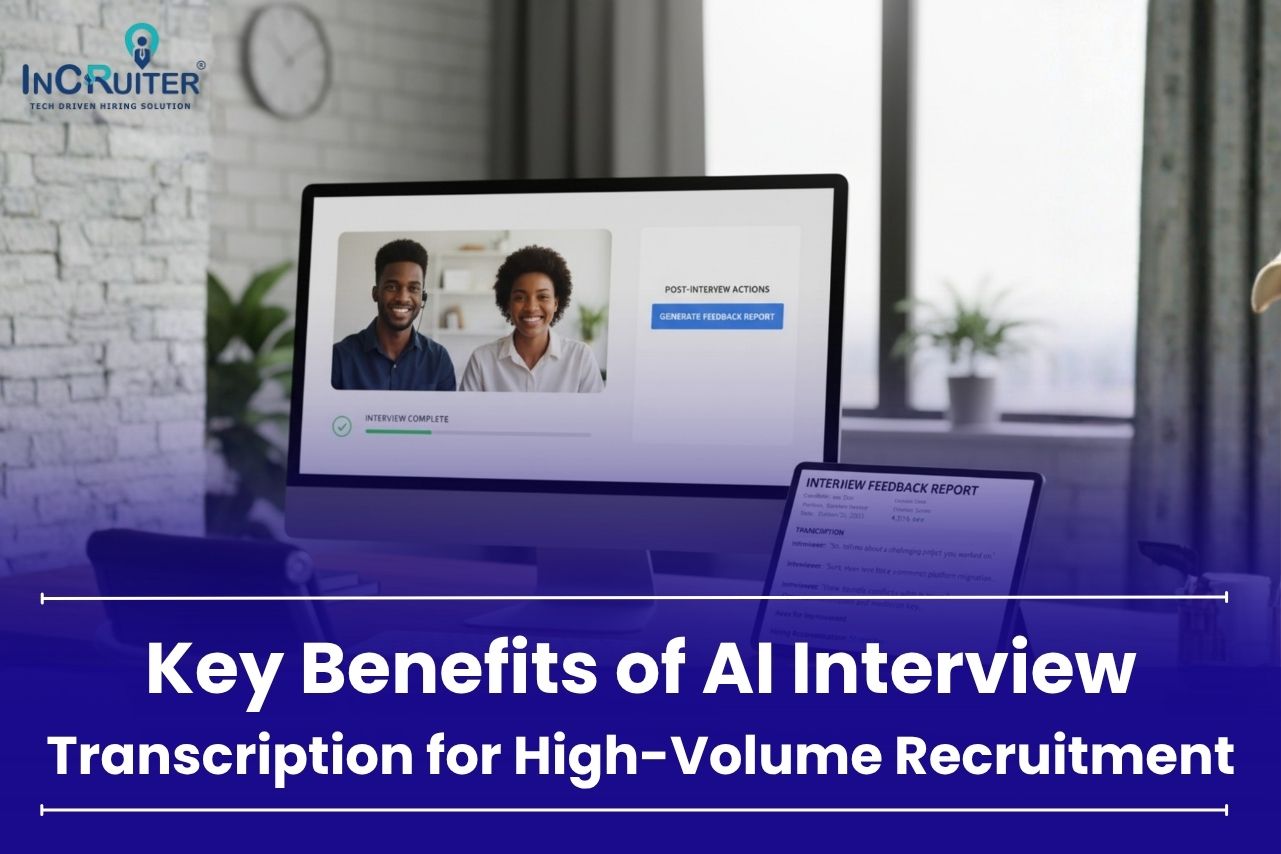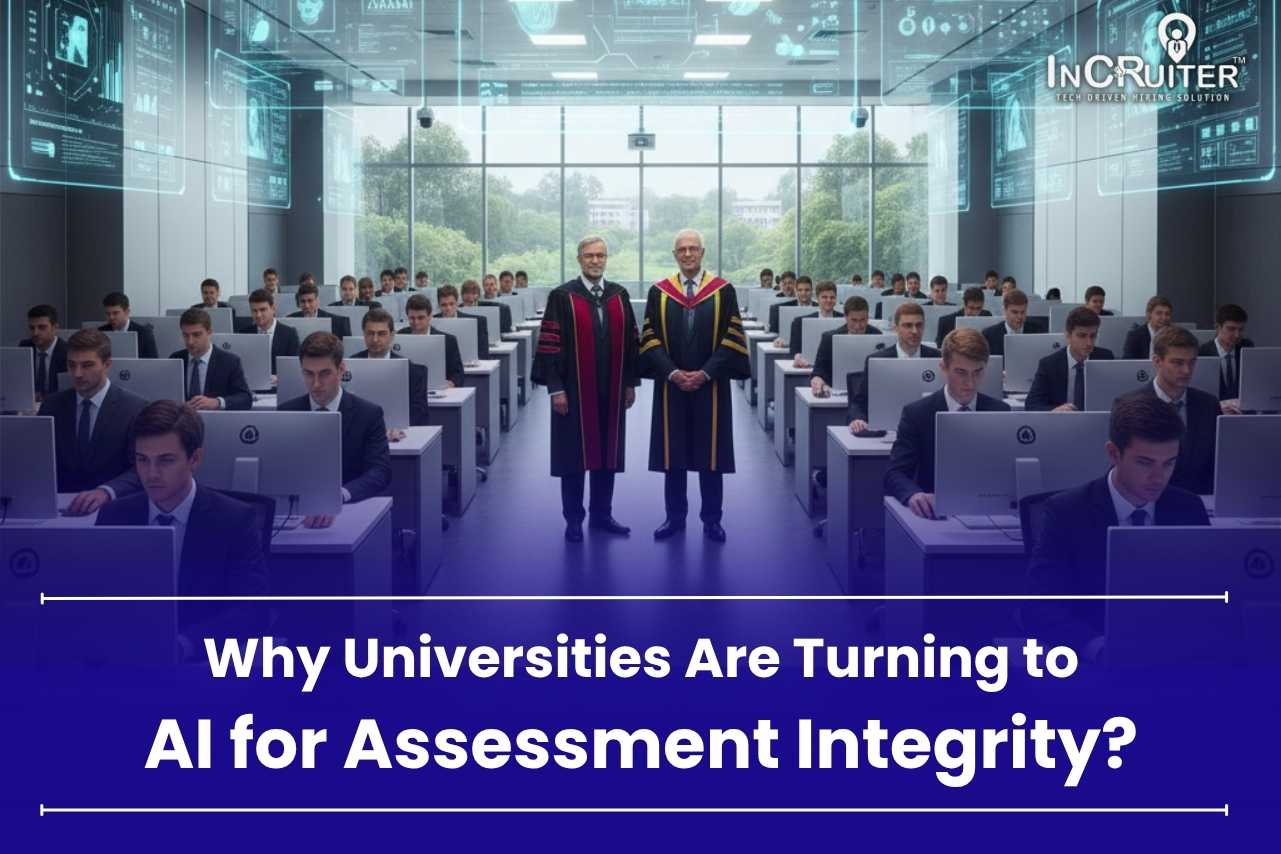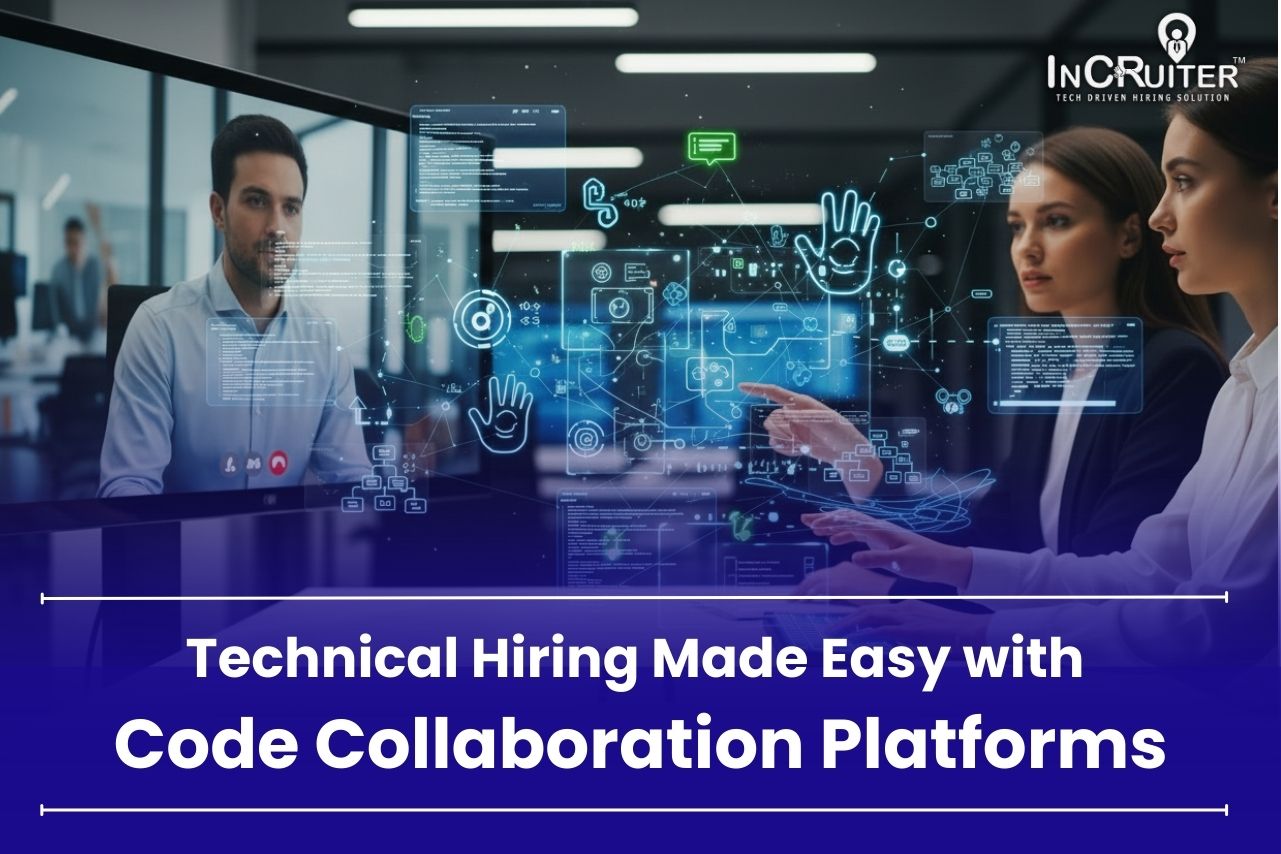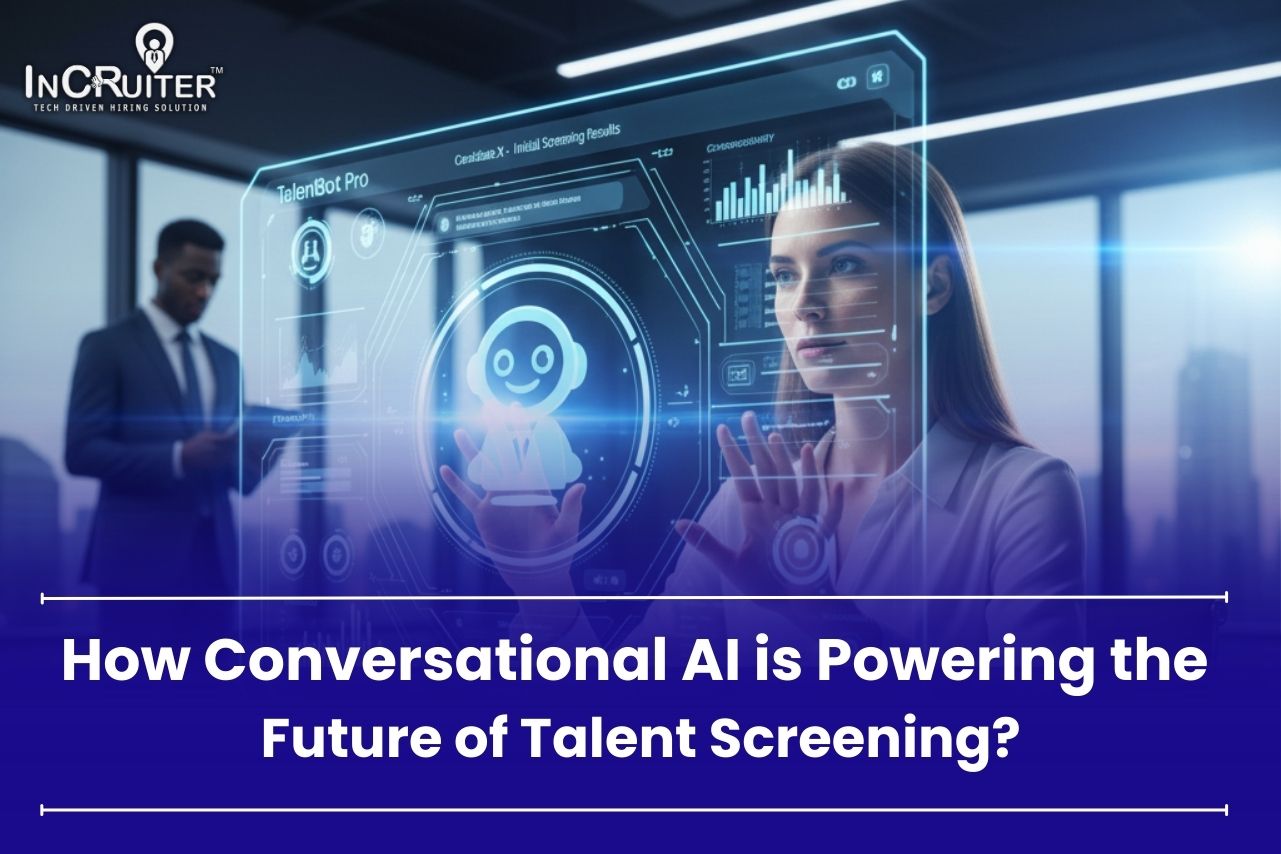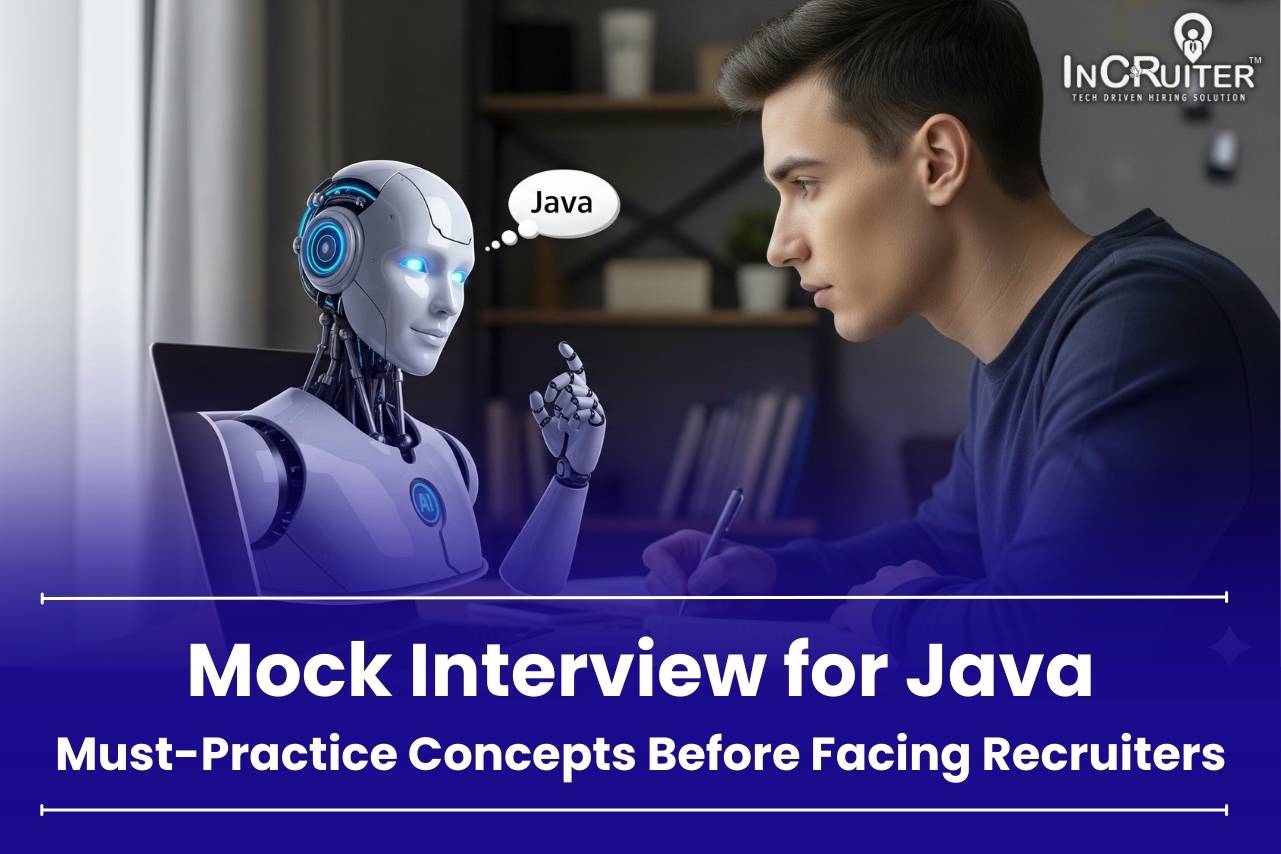Hiring can feel like an endless maze, right? You’re out there searching for someone who fits just right, but it can seem nearly impossible. What skills you need? Hard to find. And the best candidates? They’ve got choices everywhere. On top of that, the entire process can stretch out, filled with step after step that frustrates everyone involved. It’s clear the old ways of hiring just aren’t cutting it anymore. That’s where Interview as a Service (IaaS) steps in to flip the script.
It’s like having an extra pair of hands when you need them the most. Skilled interviewers handle the trickiest parts, smarter tools make candidate evaluations sharper, and the whole process speeds up. Suddenly, hiring feels less overwhelming and more like an exciting chance to build a winning team.
Here’s a quick fact to chew on 78% of hiring managers believe slow, complicated hiring holds businesses back. But it doesn’t have to stay that way. With IaaS, you gain back precious time, hire better talent, and keep things moving smoothly. Ready to make hiring faster and easier? It’s time to take that first step!
Step-by-Step Approach to Implement Interview as a Service (IaaS)
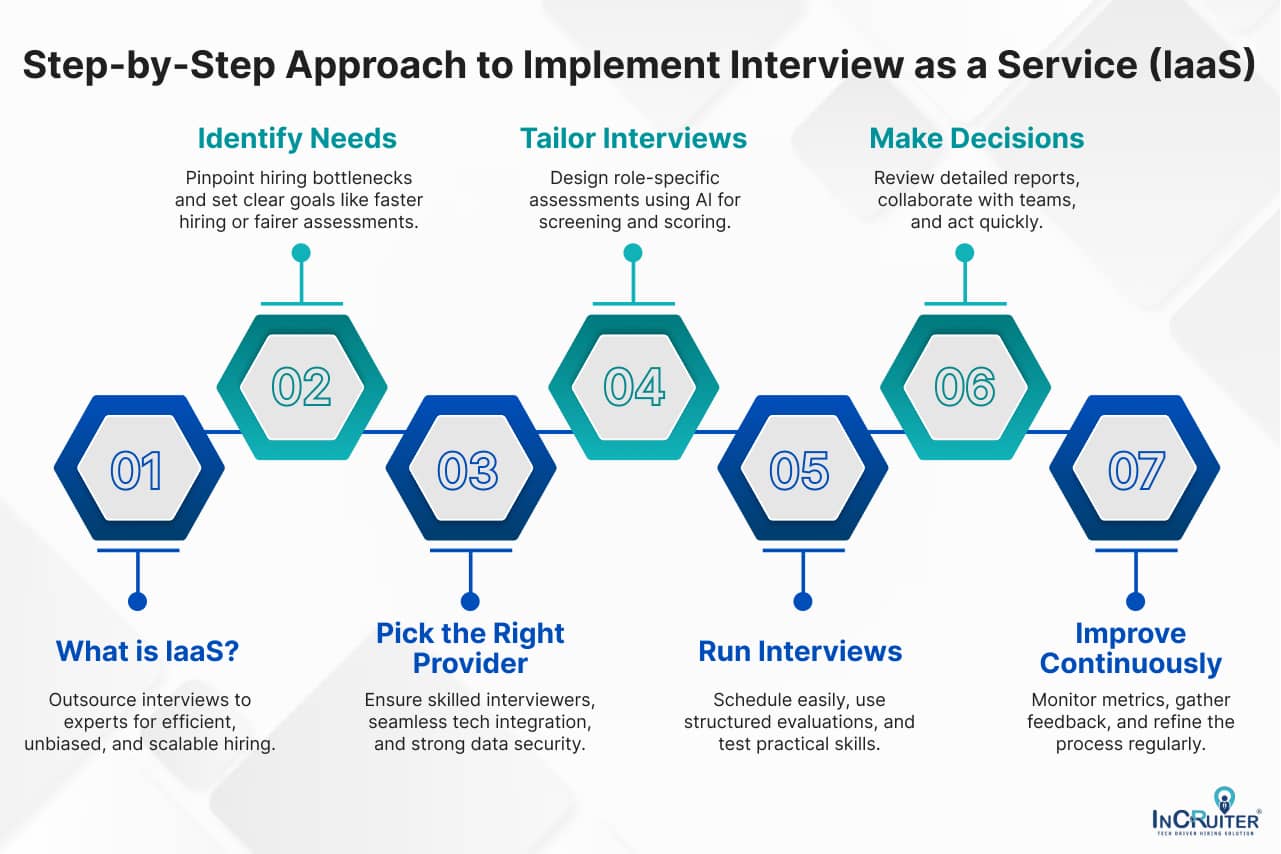
Step 1: Understand the Concept of IaaS
Interview as a Service (IaaS) offers a modern way to handle hiring. It brings in experts who manage interviews using well-designed tools, making the process smoother for companies. This approach reduces bias, keeps evaluations consistent, and creates a better experience for both recruiters and candidates. It’s also flexible enough to grow with your hiring needs.
To make the most of IaaS, it’s helpful to know where it fits into your recruitment plans. Are your teams tied up with long interviews? Are assessments feeling uneven? Or is there pressure to find skilled candidates faster? IaaS can handle these issues with solutions tailored to your goals.
What sets IaaS apart is its fairness. It follows structured methods to measure a candidate’s skills and their fit for a role. This eliminates the risk of personal preferences swaying the results. Whether you’re filling a few roles or building a large team, it adapts effortlessly to meet the demand.
Another major perk is the time it saves. Outsourcing interviews allows your internal team to focus on onboarding new hires or improving hiring strategies. For candidates, the process often feels smoother and more professional, leaving a strong positive impression.
If you’re thinking about trying IaaS, start by clarifying your goals. Is the aim to speed up hiring? Or is finding top talent your top priority? Once you know what you need, it’s easier to align IaaS with your objectives.
By weaving IaaS into your hiring efforts, you not only save time but also improve the quality of your recruitment process, making it a win for everyone involved.
Step 2: Assess Organizational Needs
To make Interview as a Service (IaaS) work well for your organization, start by understanding your exact needs. Begin by closely reviewing how your hiring process currently operates and pinpointing areas that slow things down. For instance, are interviews often postponed because schedules don’t align? Are candidates being assessed unevenly, causing you to miss out on good talent? Or does the process take so long that strong candidates lose interest?
Identifying these issues is crucial. Look at data like how long it usually takes to hire someone, how many candidates drop out midway, or what hiring managers say about the process. Discuss with your team to uncover specific hurdles. It could be slow responses, unclear job expectations, or not having the right expertise for technical evaluations.
Once you’ve figured out the main problems, set straightforward goals. Do you want to speed up the process by reducing hiring time by a %60? Are you aiming to create a fairer evaluation process? Or is improving the candidate experience your primary focus? These goals should be easy to measure and directly connected to your business objectives.
By carefully analyzing and addressing these factors, you create a solid plan for implementing IaaS in a way that matches your requirements. A tailored approach makes the hiring process smoother, helping you find the right talent quickly and effectively.
Step 3: Select the Right IaaS Provider
Picking the right Interview as a Service (IaaS) provider can completely transform your hiring process. The goal is to find a partner who understands what your company needs and delivers fast, reliable results.
Start by focusing on the interviewers. Do they have the skills to assess both technical and non-technical roles? Review their certification, past work experience, and how they approach interviews. Providers who understand your industry can bring better insights and help tackle your unique hiring challenges effectively.
Technology is now a major part of hiring. Look for features like a coding assessment platform, live pair programming tools, and easy interview scheduling systems. These tools save time and make the process smoother for both your hiring team and the candidates.
Customer support is equally important. Read online social media and Google feedback or ask for recommendations to find out how responsive and helpful the provider is. Whether you’re setting up or need help later, quick support ensures things run smoothly without delays.
Don’t forget about integration. Check if their tools connect easily with your current systems like application tracking systems or HR platforms. Also, make sure they follow data safety rules and meet legal requirements to avoid future problems.
When you choose a provider that matches your goals and systems, hiring becomes more efficient. It’s not just about finding people for the job; it’s about building a process that works smarter and better in the long term.
Also read: Relevance of Interview as a Service in the Modern World
Step 4: Customize the Interview Process
Shaping the interview process to suit your organization’s unique needs is where the real impact begins. It’s not about using a one-size-fits-all method, it’s about designing a process that works perfectly for your team.
Start by pinpointing what each role truly requires. Collaborate with your Interview as a Service partner to create interviews that focus on those specific needs. For technical roles, decide which skills to prioritize: coding, debugging, or system design. For non-technical positions, concentrate on evaluating problem-solving, communication, or behavioral traits.
Small details matter, too. Should candidates work on live coding exercises or just explain their approach? How complex should the questions be for entry-level roles compared to senior positions? Even the interview duration makes a difference; keep it brief for initial rounds but allow more time for in-depth evaluations.
To streamline the early stages, rely on technology for resume screening. Smart AI interview tools can match resumes with job descriptions, highlight gaps, and rank candidates based on their qualifications. These tools also provide automatic scores, ensuring a fair and consistent review of each application.
Step 5: Conduct Interviews
Conducting interviews is where your hiring strategy truly takes shape, and with IaaS, it’s designed to be efficient, data-driven, and insightful. Here’s how to make every stage seamless and impactful:
Make Scheduling Easy
Forget endless email exchanges. IaaS tools let you send automated links to shortlisted candidates for assessments. Interview scheduling software syncs directly with calendars, so candidates can pick a time slot without delays. By providing clear, step-by-step instructions covering what the assessment includes, setup details, and the next steps, you create a smooth and stress-free process for everyone.
Smarter Screening with Tech
Start the process with automated assessments to handle the initial round of filtering. AI interview software evaluates communication, problem-solving, and technical skills. For tech roles, built-in coding platforms allow candidates to tackle real-world challenges like debugging, designing algorithms, or optimizing solutions. Their performance is scored based on speed, accuracy, and problem-solving abilities.
AI tools generate unbiased reports with data-backed insights. These reports show coding strategies, decision-making skills, and even clarity in communication, ensuring fair and clear evaluations.
Consistent Interviews
The next step is structured interviews through video interview software, handled by skilled professional interviewers who focus on specific skills for the role, whether technical expertise, leadership, or alignment with company culture. A standardized set of questions ensures fairness while still leaving room for deeper, role-specific discussions.
HR teams can even tune in silently to observe these interviews, offering an added layer of assessment. With instant feedback from interviewers, decisions happen faster, keeping the recruitment process on track.
Real-World Skill Checks
For technical roles, practical evaluations are essential. Pair programming interview platform allow candidates to collaborate with experts in solving real-time coding problems. These sessions don’t just test their coding ability; they reveal how candidates communicate, think under pressure, and collaborate effectively. Tasks can even be tailored to reflect the real work they’ll be handling on the job.
For non-technical positions, interviewers can use case studies or ask situational questions to test creativity and decision-making. These practical evaluations, whether for tech or non-tech roles, offer a clear picture of how candidates will handle real job challenges.
Step 6: Finalize Candidate Evaluations and Make Decisions
The final stage of the Interview as a Service (IaaS) process is all about assessing candidates thoroughly and making informed choices. This is the moment where gathered insights come together to help pick the best fit for your team.
Use Detailed Feedback
The reports generated by IaaS platforms are a goldmine of information. They include scores, transcripts, and interview recordings, giving a clear picture of how each candidate performed. Centralized dashboards make the process even smoother. AI interview tools bring all candidate data, such as scores, behavioral reviews, and technical assessments into one place. With built-in filters and easy-to-read charts, comparing candidates against specific job requirements becomes much simpler.
Work Together on Decisions
Bring the team together to discuss the results. Using tools like scorecards or evaluation grids helps keep discussions focused and fair. Evaluate factors such as technical skills, interpersonal strengths, and alignment with the company’s culture. Giving weight to key areas like leadership potential or diversity goals ensures that decisions align with the organization’s broader objectives.
Communicate Without Delay
After decisions are made, act quickly. Automated email tools can notify candidates about their application status, whether they’ve been selected, rejected, or are moving to the next step. Timely and clear communication improves the overall candidate experience and enhances your reputation as an employer. For those who are selected, digital offer letters sent through secure platforms speed up onboarding and create a smooth transition into the company.
Step 7: Post-Hiring Analysis and Continuous Improvement
To get the best out of Interview as a Service (IaaS), taking a close look at the results after hiring is essential. This helps you measure its impact, refine your process, and make adjustments to keep improving hiring outcomes.
Keep an Eye on Key Metrics
Tracking important numbers is a great way to understand how well IaaS is working. Here are a few areas to focus on:
- Time-to-hire: Check if roles are being filled faster compared to before using IaaS.
- Candidate experience: Gather feedback through simple surveys to learn how applicants felt during the hiring process.
- Quality of hire: Look at how new employees are performing, how long they stay, and whether managers are satisfied with them.
Compare these metrics regularly with past data to spot improvements. Many IaaS platforms offer easy-to-read dashboards that show live reports and trends, making it easier to analyze the finer details.
Fine-Tune Your Hiring Process
Feedback from all participants, whether it’s hiring managers, candidates, or your recruitment tea,m can reveal areas needing improvement. Were some positions harder to fill? Did certain interview methods feel off? Use this input to make tweaks.
Work with your IaaS provider to update tools and processes. This might mean revising question sets, improving scheduling options, or adjusting assessment tools to better suit your hiring goals.
Stay in a Cycle of Improvement
Adopt a system where updates happen regularly. Meet with your IaaS provider often to discuss performance and set goals for the next hiring cycle. Make small, ongoing changes, like enhancing interviewer skills, adjusting evaluation methods, or adding better tools.
Such regular adjustments help keep your hiring process sharp, flexible, and effective over time.
Also read: What Can You Expect from Technical Interview Services?
Conclusion
Hiring can often feel like a tough challenge, but Interview as a Service (IaaS) turns it into a simpler, more manageable task. It’s an efficient way to reduce the hassle of recruiting, saving time and energy while improving the overall quality of hires. By following a clear plan, businesses can easily adopt IaaS, pick a reliable partner, and fine-tune the process to match their needs. This approach not only speeds up hiring but also creates a positive experience for candidates, helping companies find the right talent quickly.
IaaS combines skilled interviewers with smart tools to handle the trickiest parts of recruitment. This setup lets businesses focus on selecting top candidates instead of getting stuck in repetitive tasks. By keeping the process on track and making changes when needed, companies can build a dependable hiring system that works consistently over time.
For those looking to improve their hiring strategy, InCruiter offers a helping hand. With experienced interviewers, advanced tools, and a user-friendly platform, they make hiring stress-free. Their straightforward solutions simplify recruitment, making it easier to connect with the best candidates without unnecessary effort.






